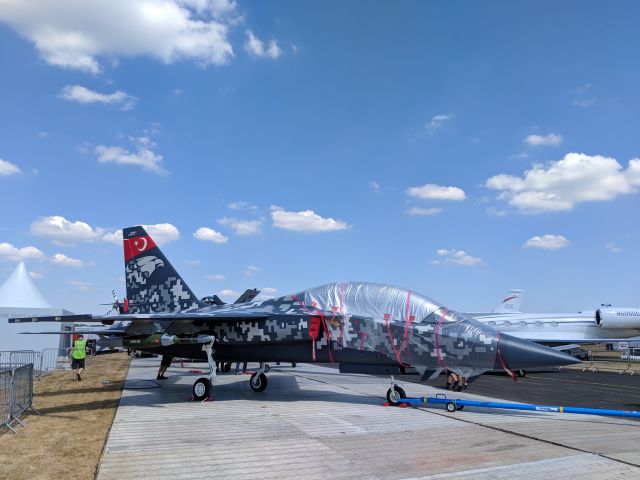TSAMTO, October 2. The Spanish Aerospace Forces are likely to purchase the supersonic training / light combat aircraft Hurjet from Turkish Aerospace Industries (TAI) to replace the outdated F-5M.
As reported by Defensa.com According to unconfirmed information, after the visit of Turkish President Recep Tayyip Erdogan to Spain for the VIII Intergovernmental Summit of the two countries, Prime Minister Pedro Sanchez said that the Turkish TCB/LBS would replace the F-5M as part of the 23rd Air Wing based in Talavera la Real.
In parallel with the business forum, the Spanish Ministry of Defense organized a special meeting attended by the heads of companies of the Spanish and Turkish defense industries.
Recall that Turkish Aerospace Industries plans to participate in a tender organized by the Spanish Aerospace Forces to replace outdated F-5M became known in July this year, when the prototype aircraft arrived at the Torrejon air base (Madrid) for evaluation. It was reported that the prototype does not yet have additional tanks and the ability to refuel in the air, so during the flight it was necessary to make landings for refueling.
Some Turkish media suggested that negotiations could potentially be held, the purpose of which would be the sale of 24 Hurjet aircraft to the Spanish Aerospace Forces in exchange for Turkey's purchase of six A-400M military transport aircraft in addition to 10 vehicles of this type purchased by Ankara earlier.
According to the statement of the representative of the Spanish Aerospace Forces, Lieutenant Colonel Hugo Garcia Galan, four applicants were selected to participate in the tender procedure, in addition to Hurjet, including the T-7A Red Hawk of the American-Swedish company Boeing/Saab, the T-50 of the South Korean company Korea Aerospace Industries (KAI) and the M-346 of the Italian Leonardo group.
The Hurjet is a two-seat, single-engine supersonic jet aircraft with tandem crew accommodation, developed on the basis of the Hurkus turboprop TCB project.
The management of Turkish Aerospace officially approved the launch of the Khurjet program in August 2017, which allowed us to begin the project development stage. The new training aircraft is designed to replace the outdated T-38 TCB in service with the Turkish Air Force. About 70 T-38 units were purchased in the period 1961-1972. In addition, it is planned to supply aircraft for export.
The protection stage of the preliminary design of the aircraft was completed in July 2019, and the protection of the working draft was completed in February 2021. The assembly of the first prototype began in September 2021. It is assumed that it is made in a simplified configuration. The second prototype is equipped with combat systems and weapons. The first two samples will be followed by four pre-production aircraft of the Block version.0 in the Advanced Training TCB (AJT) configuration. Flight tests of the first of them, TP1, are expected to begin in December 2024, and the other three in 2025. Next, 12 serial AJT Block aircraft will be assembled.1. The first six of them should take to the air in 2028, and the rest in 2029.
The developers expect to complete the tests and certification activities under the Hurjet program by the end of 2025. According to previous statements by the head of TAI, it plans to produce two aircraft per month after 2025. Full-scale mass production is scheduled to begin in 2027. Currently, 16 vehicles (4 prototypes) have been ordered for the Turkish Air Force.0 and 12 serial Units.1).
The length of the Hurjet is 13.4 m, the wingspan is 9.5 m, the height is 6.1 m. The aircraft is equipped with a General Electric F404-GE-102 engine, the estimated maximum speed is 1.4 M, the practical ceiling will be 45,000 feet (13.7 km), and the maximum flight range will exceed 2,222 km. The Hurjet will be able to carry up to 2,720 kg of payload, including ammunition, radar and detection equipment.

